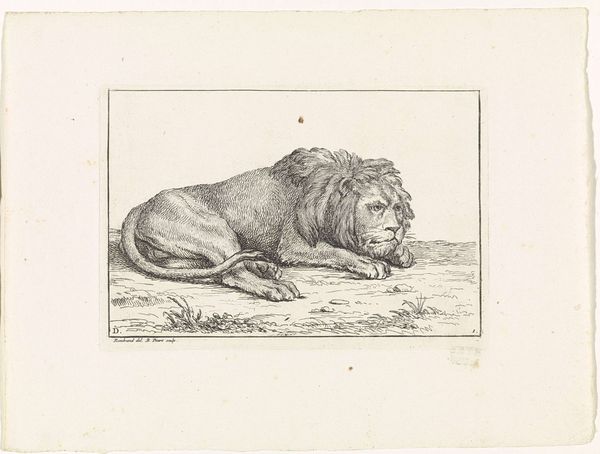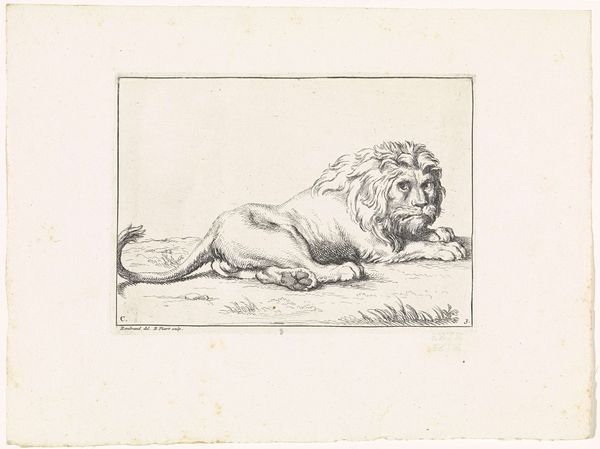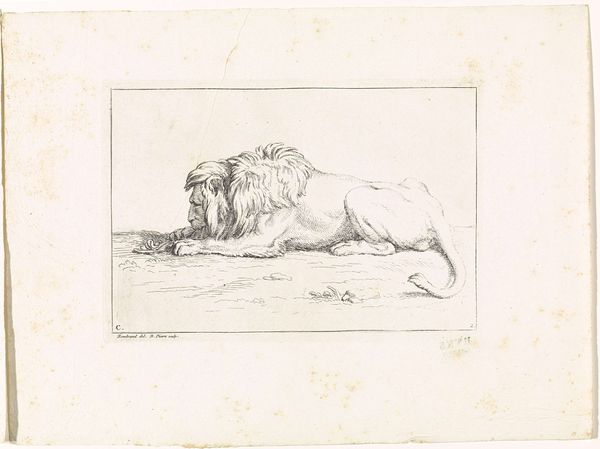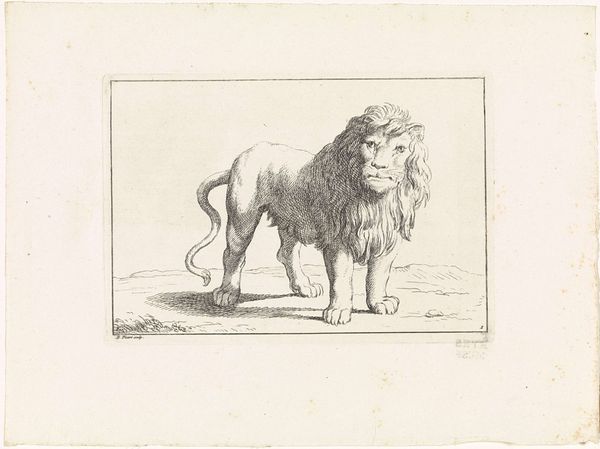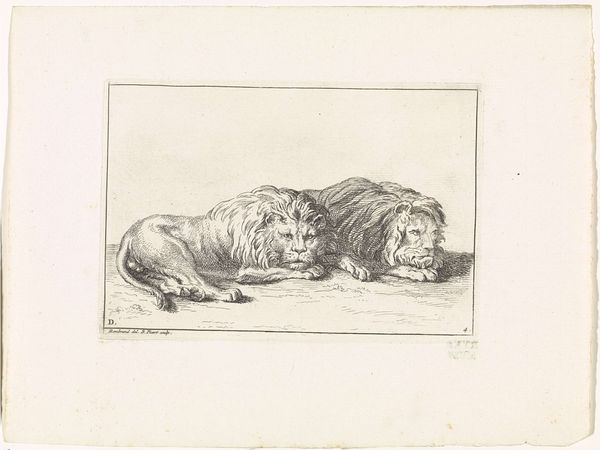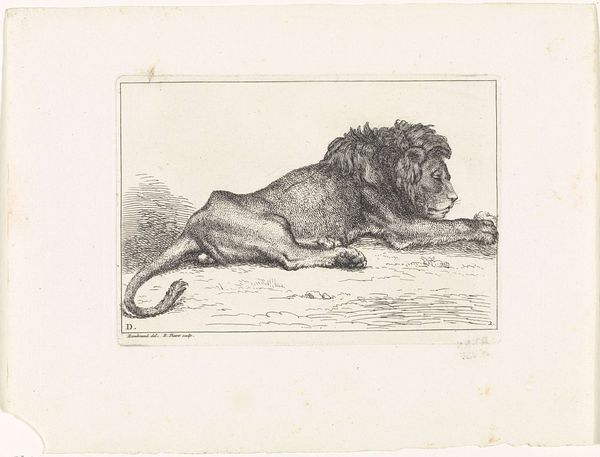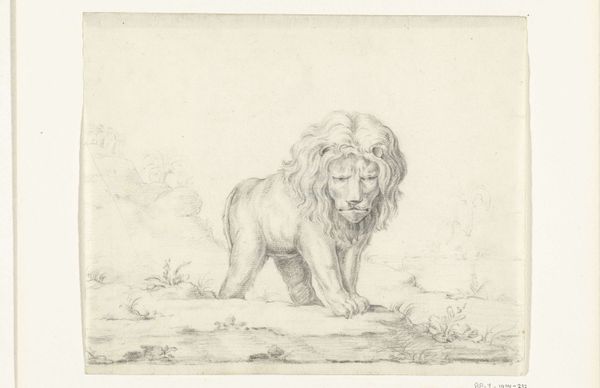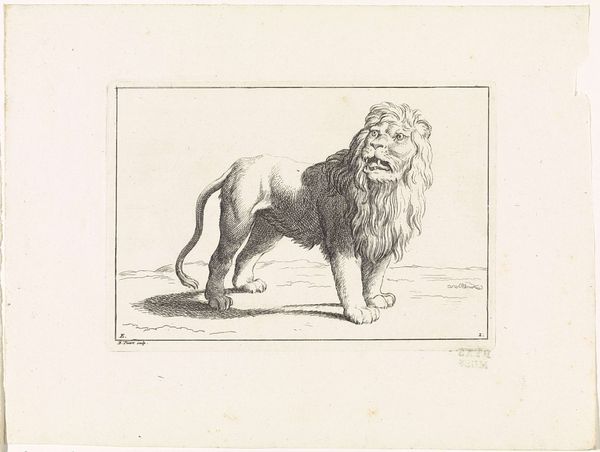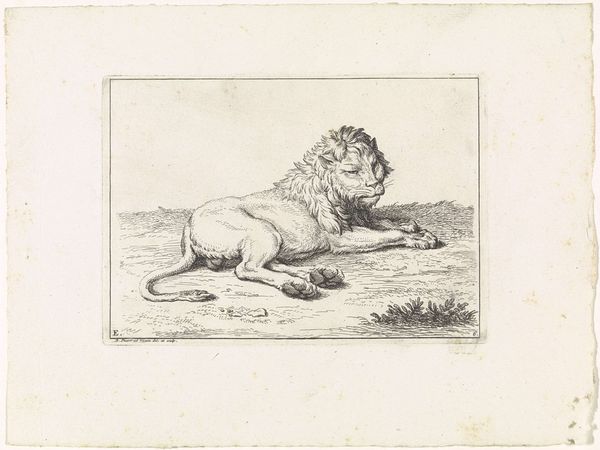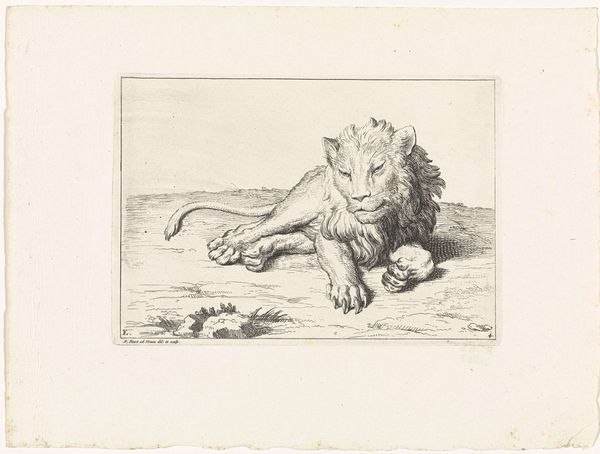
drawing, ink, pen
#
drawing
#
baroque
#
animal
#
pen sketch
#
pencil sketch
#
landscape
#
figuration
#
ink
#
pen-ink sketch
#
pen
#
realism
Dimensions: height 121 mm, width 177 mm
Copyright: Rijks Museum: Open Domain
Curator: We’re looking at Bernard Picart’s "Sleeping Lion," created in 1729. It's currently held in the Rijksmuseum. The work is done in pen and ink. Editor: It's… surprisingly docile. For a lion. There’s a weight to its form, a stillness emphasized by the tight hatching. I'm struck by the density of the mane. Curator: Picart created this during the Baroque period, which was marked by grandiosity, drama, but also burgeoning scientific observation. This piece embodies a changing relationship between humans and the natural world. Think of the menageries being established during this time, exhibiting exotic animals for both study and public fascination. Editor: Right, these displays directly influenced how animals were represented in art. I wonder what materials were available to Picart—were these mass produced inks, or custom concoctions reflecting social standing? Were his pens goose feather or metal tipped? The choice definitely informs the mark-making. Curator: Excellent question. Understanding these details helps us dismantle any romantic notions we have about artistic "genius." The means of art production are embedded in class structures of 18th-century Europe. Moreover, depictions like these solidified Western power over the animal kingdom. It feeds into the long tradition of subjugation. Editor: It does, and the angle of the head and paws suggests a conscious vulnerability, a staged submissiveness that the viewer assumes dominance over. This is about consumption too, isn't it? An appetite for the exotic rendered through ink on paper for bourgeois domesticity. Curator: Exactly. A shift towards more empirical and "realistic" renderings in art becomes intertwined with the era’s colonial projects. Editor: Understanding that making art always requires raw material, the tools of the artist, and a location brings us into this time. It reminds me that viewing and thinking are physical labor too. Curator: I completely agree, understanding the historical moment of its creation and circulation is key to decolonizing our vision. Editor: A final thought is the necessity of the sleeping lion. We always assume it has power; we forget how exhaustion connects us to all living beings.
Comments
No comments
Be the first to comment and join the conversation on the ultimate creative platform.
